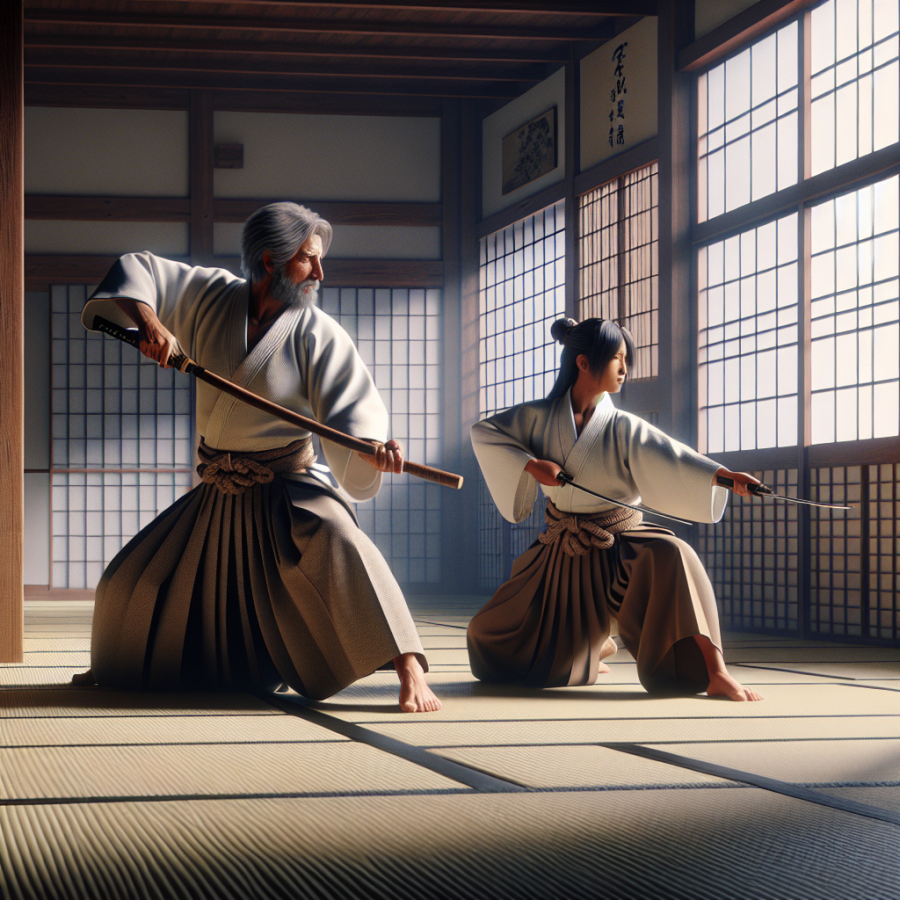Mastery of Traditional Weapons in Okinawan Kobudō Practice
Mastery of traditional weapons is a cornerstone in the practice of Okinawan Kobudō, an ancient martial art that has been passed down through generations, retaining its historical techniques and philosophies. Kobudō, which translates to 'the way of ancient martial arts,' encompasses the use of various weapons that were traditionally available and used by the Okinawans, often derived from farming and fishing tools.
The primary weapons used in Okinawan Kobudō are the Bo, Sai, Tonfa, Nunchaku, and Kama, with several other less common implements such as the Eku (oar), Tekko (knuckle dusters), Tinbe-Rochin (shield and spear), and Sansetsukon (three-section staff). Mastery of these traditional weapons involves a deep understanding not only of their physical handling but also of the principles and strategies that dictate their use.
**Bo**: The Bo is a long staff weapon and one of the most fundamental in Kobudō. Mastery of the Bo involves learning various grip positions, stances, and strikes that can be adapted for reach and leverage against an opponent. Skilled practitioners demonstrate fluid transitions between offensive and defensive techniques, understanding the Bo's capacity for both wide sweeps and precise strikes.
**Sai**: The Sai is a three-pronged metal truncheon that requires dexterity and precision. It was originally used for trapping and puncturing. Mastery over Sai includes proficiency in handling one in each hand, using the techniques for blocking, trapping, and disarming opponents, as well as executing direct thrusts and strikes with the weapon’s pointed tips.
**Tonfa**: The Tonfa is a wooden baton with a side handle, and its techniques are similar to those of modern police batons. Achieving mastery over Tonfa involves learning to maximize the leverage offered by the handle for blocks and strikes. The twisting motion used when deploying the Tonfa is essential, as it can generate significant force for offense while also being a powerful deterrent in defense.
**Nunchaku**: The Nunchaku, consisting of two sticks connected by a chain or rope, is one of the most challenging weapons to master due to its unpredictability and speed. Practitioners must dedicate significant time to develop coordination, as controlling the swing and maintaining fluidity in motion is critical for effective application.
**Kama**: The Kama, a sickle-shaped weapon, was originally used for cutting grass or reaping crops.
Read also:
Twist and Turn: The Thrilling World of Supermoto Racing
Unveiling the History and Origins of Okinawan Kobudō
Okinawan Kobudō is a traditional martial art that hails from the Okinawa Prefecture in Japan. This ancient practice encompasses the use of various traditional farming tools that were transformed into weapons by the local populace, particularly for self-defense.
The roots of Kobudō can be traced back to the times when Okinawa was known as the Ryukyu Kingdom, which had a unique cultural exchange with both Japan and China. Influences from these interactions are evident in the development of Okinawan martial arts. The term "Kobudō" itself means "old martial way," reflecting the depth of history and tradition associated with the art.
During the 15th century, the Okinawan king Sho Shin implemented a weapons ban, prompting inhabitants to use everyday agricultural implements for protection. This gave rise to the ingenious adaptation of tools like the "nunchaku," originally a rice flail; the "sai," which was likely used for planting rice; the "tonfa," based on a millstone handle; and the "kama," a sickle, among others.
The historical development of Kobudō is shrouded in some mystery, given that much of its early history was passed down through oral tradition rather than written records. However, it is known that in the 19th century, Tode Sakugawa played a significant role in shaping the martial traditions of Okinawa, including Kobudō. He, along with other prominent figures such as "Bushi" Matsumura Sokon and Hama Higa, were integral to the codification and teaching of Kobudō techniques.
As an art form, Okinawan Kobudō is not just a set of fighting techniques but also a reflection of Okinawan history and culture. Each weapon and the accompanying techniques tell a story of the island's past, providing a glimpse into the lives of the farming communities and their resilience in using whatever resources they had to protect themselves.
Training in Kobudō is comprehensive, as practitioners must not only master the movements and forms, or "kata," associated with each weapon but also understand the application of these weapons for self-defense. Balance, coordination, and the development of fluid movements are fundamental aspects of the art. Dedicated practitioners also delve into the philosophy and discipline that underpin Okinawan martial arts, which emphasize peace, discipline, and personal development.




